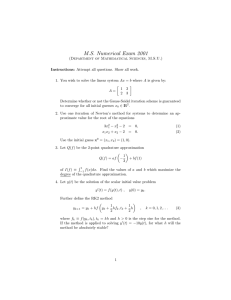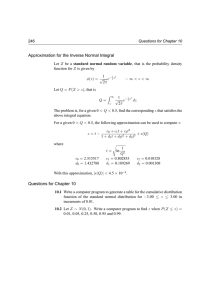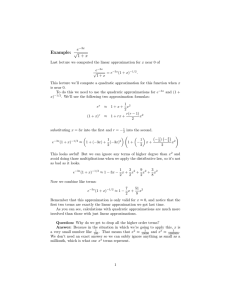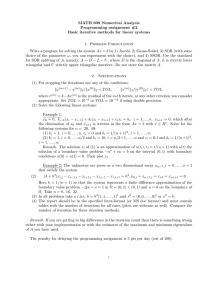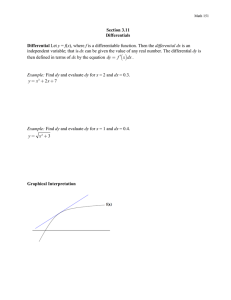Lecture 13-14 - COR@L
advertisement
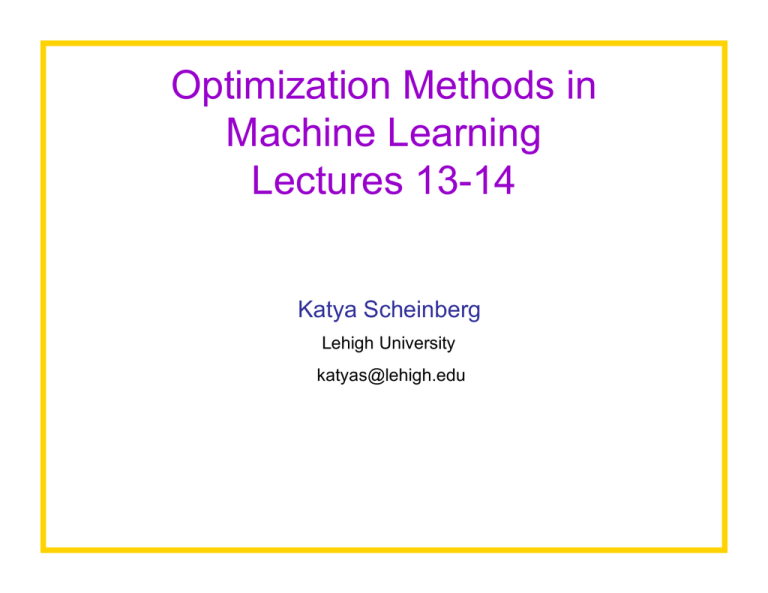
Optimization Methods in Machine Learning Lectures 13-14 Katya Scheinberg Lehigh University katyas@lehigh.edu First Order Methods First-order proximal gradient methods • Consider: • Linear lower approximation • Quadratic upper approximation First-order proximal gradient method • Minimize quadratic upper approximation on each iteration • If µ· 1/L then Slides from L. Vandenberghe http://www.ee.ucla.edu/~vandenbe/ee236c.html Complexity bound derivation outline Complexity of proximal gradient method • Minimize quadratic upper approximation on each iteration • If µ· 1/L then in O(L||x0-x*||/²) iterations finds solution Compare to O(log(L/²)) of interior point methods. Can we do better? Accelerated first-order method Nesterov, 83, 00s, Beck&Teboulle 09 • Minimize upper approximation at an intermediate point. • If µ· 1/L then Complexity of accelerated first-order method Nesterov, 83, 00s, Beck&Teboulle 09 • Minimize upper approximation at an intermediate point. • If µ· 1/L then in iterations finds solution This method is optimal if only gradient information is used. Slides from L. Vandenberghe http://www.ee.ucla.edu/~vandenbe/ee236c.html FISTA method Beck&Teboulle 09 • Minimize upper approximation at an intermediate point. • If µ· 1/L then in iterations finds solution µ is not a prox parameter here Slides from L. Vandenberghe http://www.ee.ucla.edu/~vandenbe/ee236c.html Slides from L. Vandenberghe http://www.ee.ucla.edu/~vandenbe/ee236c.html Slides from L. Vandenberghe http://www.ee.ucla.edu/~vandenbe/ee236c.html Unconstrained formulation of the SVM problem SVM problem using Huber loss function First order methods for composite functions Examples • Lasso or CS: • Group Lasso or MMV • Matrix Completion • Robust PCA • SICS Prox method with nonsmooth term • Consider: • Quadratic upper approximation Assume that g(y) is such that the above function is easy to optimize over y Example 1 (Lasso and SICS) • Minimize upper approximation function Qf,µ(x,y) on each iteration Closed form solution! O(n) effort Example 2 (Group Lasso) Very similar to the previous case, but with ||.|| instead of |.| Closed form solution! O(n) effort Example 3 (Collaborative Prediction) Closed form solution! O(n^3) effort ISTA/Gradient prox method • Minimize quadratic upper approximation on each iteration • If µ· 1/L then in O(L/²) iterations finds solution Fast first-order method Nesterov, Beck & Teboulle • • Minimize upper approximation at an accelerated If µ· 1/L then in iterations finds solution point. Practical first order algorithms using backtracking search Iterative Shrinkage Threshholding Algorithm (ISTA) • Minimize quadratic upper relaxation on each iteration • Using line search find µk such that • In O(1/µmin²) iterations finds ²-optimal solution (in practice better) Nesterov, 07 Beck&Teboulle, Tseng, Auslender&Teboulle, 08 Fast Iterative Shrinkage Threshholding Algorithm (FISTA) • Minimize quadratic upper relaxation on each iteration • Using line search find µk · µk-1 such that • In Very restrictive iterations finds ²-optimal solution Nesterov, Beck&Teboulle, Tseng FISTA with line search Goldfarb and S. 2010 • ISTA s complexity is O(L/²) while FISTA s is • However, FISTA s condition µk · µk-1 often slows down practical performance and simply ignoring the condition does not help. • We want to modify FISTA algorithm to relax µk · µk-1, while maintaining complexity bound or maybe even improving it Find µk · µk-1 such that Cycle to find µk Convergence rate: Find µk such that This condition…. … gives this bound on the error Goldfarb & S. 2011 FISTA with full line search Find µk such that Cycle to find µ and t Goldfarb & S. 2011
